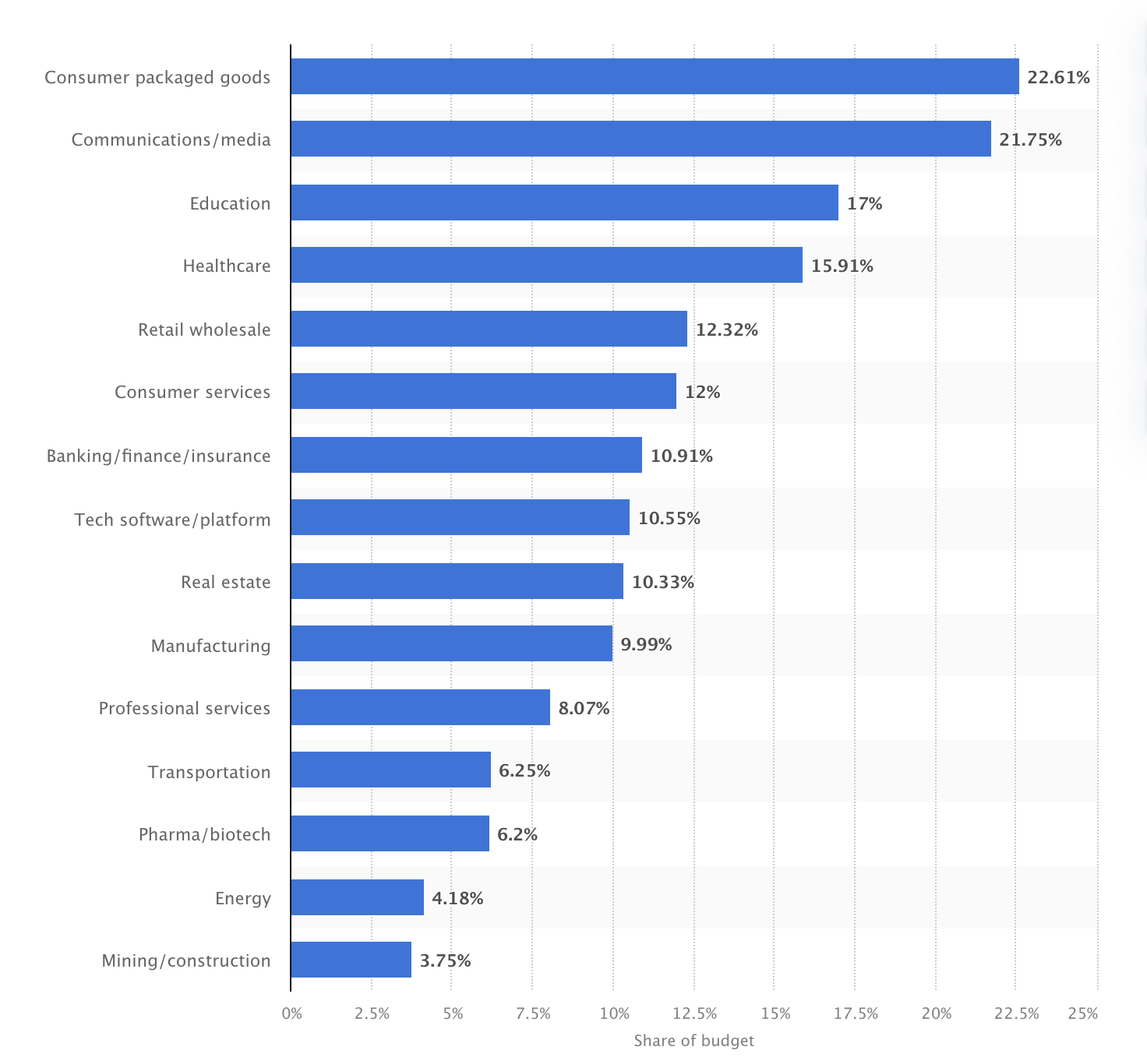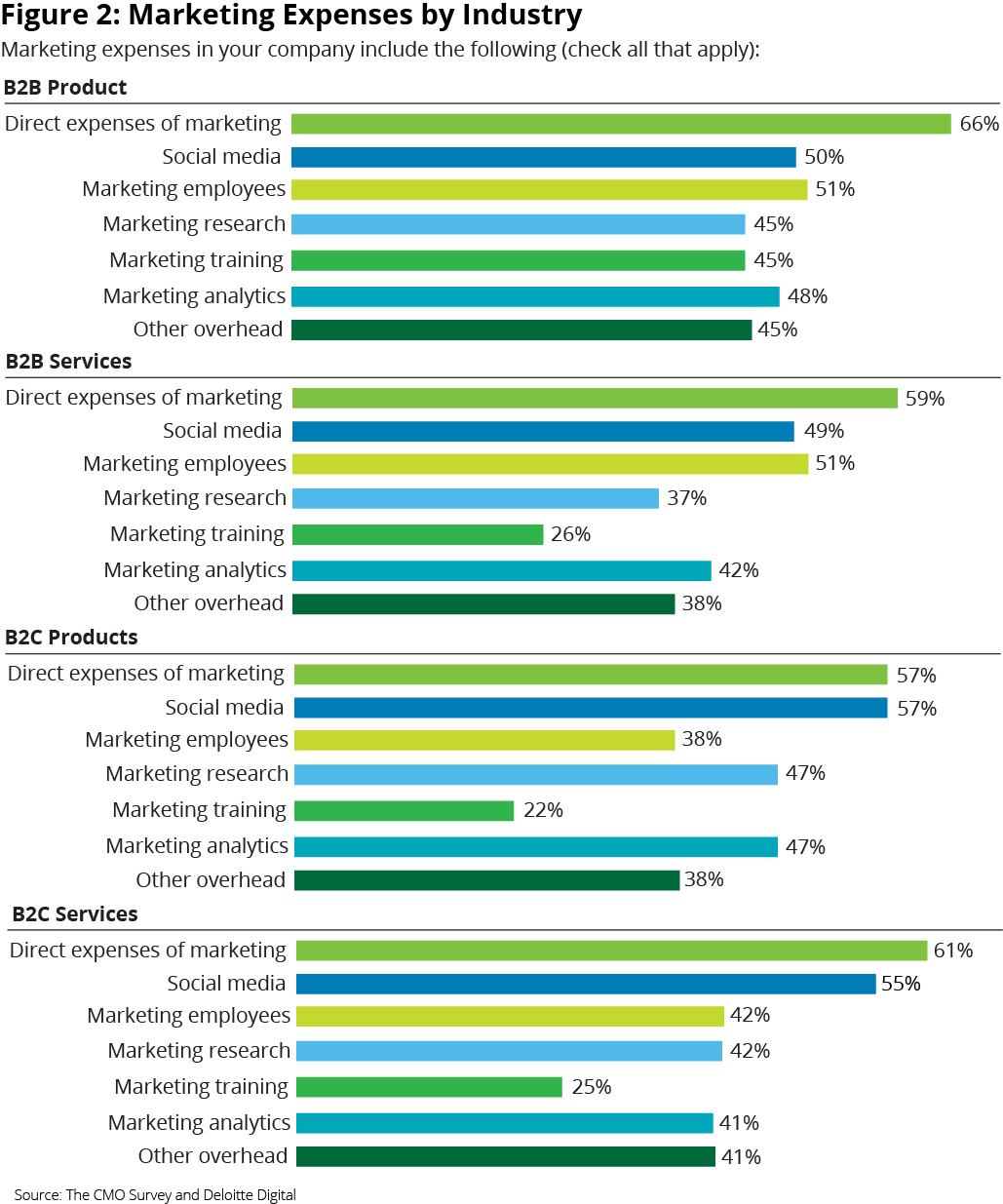What if you start a company and want to introduce it to the world? Here comes the marketing. But what about expenses? How much it will cost you? Even if you have unlimited resources how much will you spend? One hundred dollars? Thousands? A million? So, let’s speak about marketing budgets, experts’ opinions, and how to find the perfect balance between marketing budgets and their effectiveness.
What Defines the Size of the Marketing Budget
A myriad of guidelines and approaches have been developed within the last decade. Marketing is a constantly evolving thing requiring permanent changes if you want to keep your business up-to-date. On average, specialists suggest that a company’s marketing budget must be from 7 to 12% of total income. But the difficulty is that this number may slightly (or not slightly) differ depending on the sphere you are involved in, the size of the company, and a variety of other factors.
“Spenders” and “Scrooges” in marketing
A company’s industry is one of the key factors when determining its marketing budget. For example, according to Statista in 2023, consumer packaged goods manufacturers spent up to 22-23% of their revenue in online marketing, while energy and mining companies used to spend less than 5%. Here is a detailed breakdown of marketing expenses as a percentage of companies’ overall budgets according to CMOs in the United States as of February 2023, by industry.

These numbers have changed significantly in recent years, with every industry seeing a decline in marketing spending. From 2016 to 2020, marketing budgets experienced significant growth, with considerable investment in digital channels and technology. This period highlighted the prominence of digital marketing, as tech expenditures garnered a large share of these budgets. It marked the zenith of an era characterized by abundance.
In contrast, as of 2023, the trend has shifted towards an era defined by austerity. Marketing budgets have yet to recover to the levels seen before the pandemic. The purchasing power of marketing departments is being constricted due to escalating expenses and declining returns. The current challenge revolves around maximizing efficiency with limited resources, leading to heightened scrutiny over technology investments.
Reasons for Reducing Marketing Costs
Despite increased competition, there has been a noticeable decline in advertising costs. This is due to several factors:
- Changing Marketing Strategies: Marketing approaches have undergone significant changes in recent years. The emergence of new tools and changing consumer perceptions of advertising have made traditional and expensive methods less effective.
- Shift to Digital Marketing: Companies have reduced spending on traditional channels (TV, radio, etc.) in favor of digital marketing, which is much cheaper and often more effective.
- Independent search for information by consumers: Increased competition motivates buyers to more actively seek information about goods and services, which reduces the need for active advertising.
- Strengthening Marketing Analytics: With the development of marketing analytics, companies have begun to more accurately determine the effectiveness of various promotion channels and accordingly reduce unnecessary costs.
Now, companies from The Coca-Cola Company to Nike are cutting back on their advertising budgets as consumers become more proactive in engaging with products on their own. If previously the main goal of advertising was to increase awareness, now the emphasis is shifting to conveying the value of the product, while the main thing is not the quantity, but the quality of advertising messages.
Where the Money Goes?
Where investments in marketing go depends on the specifics of the industry and the age of the company. For example, startups often invest most of their money in building brand awareness and attracting early audiences, while established companies focus on finding new customers and beating the competition.
Main areas of marketing expenses:
- Direct Marketing Costs: These include costs directly associated with selling and promoting the product.
- Social networks: Costs for creating and maintaining advertising accounts, updating advertising posts, and creating creatives.
- Employees: Includes wages, search, and hiring of marketers, time spent on interviews, bonuses, etc.
- Research: Costs of collecting data on advertising campaigns, conducting testing, and studying the target audience and trends.
- Training: Includes the purchase of licenses for advertising tools and payment for employee training courses.
- Analytics: The cost of summarizing and deducing accurate data from research conducted to determine the impact of various activities on a specific business.
Marketing Costs Depending on the Industry
By analyzing overall trends in marketing spending, we can better understand why companies in different industries invest different percentages of their revenues in advertising. Let’s look at examples of budget distribution in various areas.

Software as a Service Companies
SaaS is a new direction in the world of software development cookies, but the demand for such services is growing rapidly. Examples include services such as Jira and Slack, which are widely used across a variety of businesses.
- Salesforce, renowned for its CRM system that operates exclusively as a SaaS offering, is involved in numerous ventures spanning from IT to e-commerce. Despite its widespread recognition, the company allocates a substantial 46% of its revenue to sales and marketing efforts. This resulted in approximately $5 billion of its $10.5 billion revenue in 2018 being dedicated to these areas. This strategic investment fueled a 25% profit increase in 2019, further cementing Salesforce’s dominance in the CRM software market.
- Mindbody, a provider of cloud-based business management software, commands less striking revenue figures, with $229 million in 2018. However, the company similarly channels a significant portion of its revenue, up to 40%, into marketing. This approach has yielded a notable 31% profit increase. Such considerable expenditure on marketing and sales, far surpassing R&D costs, enables SaaS firms like Mindbody and Salesforce to secure substantial market achievements.
- Tableau, which initially didn’t showcase exceptional performance, shifted gears in 2014 by ramping up its marketing investments. This strategic move propelled its revenue from $400 million in 2014 to $1.2 billion in 2018, with nearly half of its revenue allocated to marketing. This case illustrates that the conventional marketing budget guidelines of 7-12% may be overly simplistic, particularly for SaaS companies.
Technology Companies
In today’s tech-driven era, major technology corporations like Microsoft, Google, Apple, Intel, and Samsung hold prominent roles globally, boasting substantial revenue, esteemed reputations, and widespread recognition.

Nonetheless, these industry behemoths persistently channel substantial resources into marketing efforts to preserve their market dominance and facilitate ongoing growth. In 2018, leading technology companies invested the following percentages of their revenues in marketing:
- Microsoft: 15%;
- Google: 11.9%;
- Intel: 9%;
- Apple: 6%;
- Samsung: 8%.
Even with the established trust and loyalty towards these brands, they persist in making significant investments in marketing to stay competitive. Aggressive marketing tactics, especially in response to competitors’ strategies, are crucial for convincing consumers to switch to their products. Furthermore, for these companies, increasing sales remains a top objective, and marketing is regarded as a vital instrument for realizing this aim.
Manufacturing Companies
Manufacturing companies, covering a wide range of products from drugs to clothing, also rely heavily on marketing due to high competition and many alternatives in the market.
- IDEXX Labs, which offers veterinary products, invests about 15-17% of its revenue in marketing, which led to revenue growth of 12% in 2017.
- Johnson & Johnson, a maker of drugs, hygiene products, and medical devices, spent 27.7% of its revenue on marketing in 2017, contributing to revenue growth of 6.7%.
Education Industry
Educational institutions also actively use marketing, investing in attracting talented and promising students. Prestigious universities such as Harvard, Oxford, or Yale actively promote their brands through various information campaigns and social networks.
For example, the educational holding Strayer Education invested 18.2% of its revenue in marketing in 2017, and Bright Horizons, specializing in early education, allocated 10.2% of its revenues to marketing.
Marketing Agencies
Contrary to popular belief, marketing agencies also invest heavily in their promotion. For example, Ignite Visibility was able to attract a client like Tony Robbins due to its fame and reliability. WebFX, one of the leading marketing agencies working with clients such as FujiFilm, Verizon, and Wrangler, invests about 45% of its revenue in marketing. Other agencies, such as Thrive Internet and Jumpfly, also devote significant funds (35% and 37% respectively) to promoting their services.
Industry Trends in Marketing
As you can see, the level of investment in marketing varies significantly depending on the industry, from a paltry 1% to an impressive 50% of revenue. The choice of marketing strategy depends on the specifics of the business and its goals. For example, a marketing agency must actively advertise its services to attract clients, while companies in the energy and mining industry may rely on partnerships and performance. Understanding industry trends helps you formulate an effective marketing strategy, taking into account the performance of leaders in your niche.








